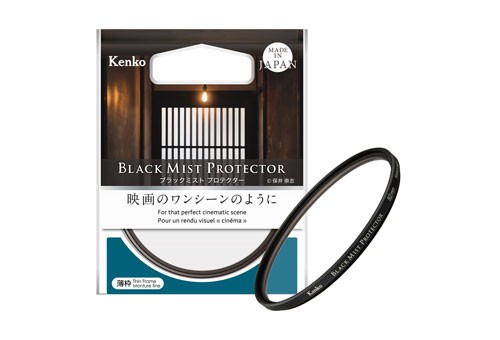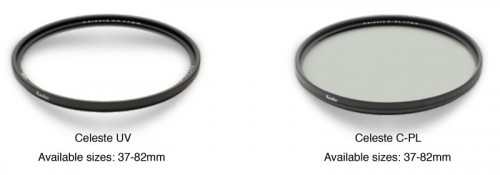High-Rate Transparency Film
This filter uses a newly developed High-Rate Transparency film that passes more visible light through the filter while still filtering the same amount of polarized light. The Kenko Clear PRO circular polarizer filter transmits as much as 25% more light through the polarizing film giving the photographer about 1/3 stop more light than a standard circular polarizer. This new polarizing film is also used in the latest HD LCD TVs.
UV Absorbing
The glass of the Kenko Clear PRO C-PL + UV absorbing filter also has UV absorbing properties making the Clear PRO a combination UV/circular polarizing filter. The most common use for a circular polarizer filter is to darken bright blue skies in outdoor photography, but they also can reduce or eliminate reflections from non-metallic surfaces such as glass and water. By rotating the outer ring of the filter the change of effect can be seen by looking though the filter or through the viewfinder if it is mounted on a camera.
Superior Color & Contrast Enhancement
PL filters allow you to remove unwanted reflection from non-metalic surfaces such as water, glass etc. They also enable colors to become more saturated and appear clearer with better contrast. This effect is often used to increase the contrast and saturation in blue skies and white clouds. Kenko's C-PL filter do not affect the overall color balance of a shot.
How to use PL-filters
PL filters achieve their greatest effect of eliminating glare when used at a 30-40 degree angle to a reflective surface (like glass or water). At midday when the sun is directly overhead, or at a 90 degree angle, the filter will have the least effect. These effects are easily visible by rotating the filter and looking through the viewfinder of the camera. Keep in mind that you will first need to adjust the polarizing filter before setting the exposure controls.
For deepening the color of the blue sky and making the clouds jump out at you, hold the camera at a right angle to the sun and take the photo when the sun is at a 30-40 degree angle in the sky.
When photographing distant subjects, scenery sometimes appears bluish. This is also caused by light polarization. Using the polarizing filter will help to greatly reduce the softness caused by atmospheric haze.
There are a variety of ways in which the use of polarizing filters can help you capture that perfect shot. Reducing the haze and enhancing colors may seem like simple effects, but once used, these effects will prove to be invaluable to photographers at any level of interest.
General care and handling of the photographic filter
- Use filter carefully and always keep it clean. When cleaning use cleaning tissue or cleaning cloth. But before that remove as much dust and dirt as possible from the lens with a blower or brush.
- Avoid unnecessary cleaning of your filter.
- Filter is made of glass. When it is broken glass fragments may injure.
- Do not disassemble filter by yourself.
- When the filter is not attached to the lens, store it away from sharp objects. They may damage the filter glass.
- Keep filter away from children.
- Keep filters in plastic hard-sided case or filter pouch.
- Keep filters dry and away from direct sun light.
- Avoid storage in high humidity environment. Moisture drops due to the high humidity or dew on the filter can burn the coating and create traces on the glass surface that can be hardly wiped off.






